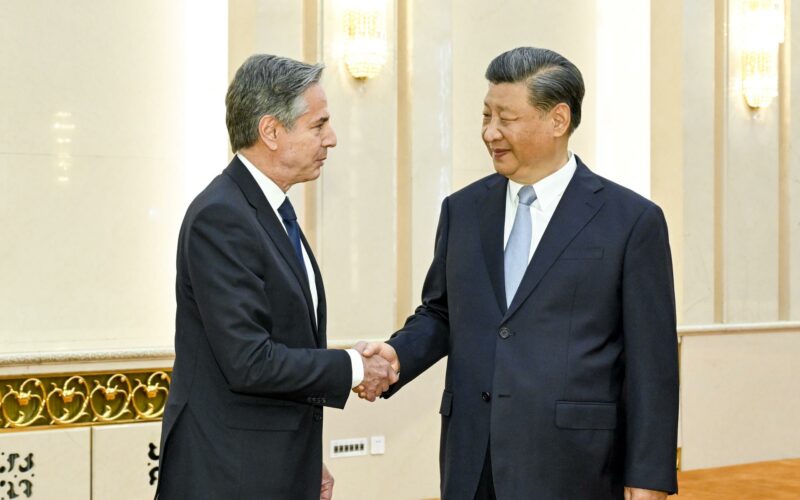Secretary of State Antony J. Blinken is scheduled to embark on a diplomatic visit to China on Wednesday, aiming to maintain the fragile stability in relations between the United States and China. The visit comes amidst escalating tensions over trade, territorial disputes, and national security concerns that threaten to undermine recent progress.
As Mr. Blinken’s plane nears Shanghai, he faces immediate challenges. His arrival coincides with the passage of a bill by the U.S. Senate, expected to be swiftly signed into law by President Biden, allocating $8 billion to Taiwan and the Indo-Pacific region. This move, coupled with the potential for a nationwide ban on the Chinese-owned app TikTok, adds complexity to the diplomatic landscape.
The domestic political environment in the United States further complicates matters. With the presidential election looming, both Democrats and Republicans are striving to demonstrate a tough stance on China. The potential reelection of former President Donald Trump could also jeopardize the current efforts to stabilize relations between Beijing and Washington.
During his three-day visit, which includes meetings in Beijing, Mr. Blinken intends to address a spectrum of issues with Chinese officials. These include China’s support for Russia, concerns over Chinese exports impacting American jobs, and aggressive maneuvers by Chinese ships in the South China Sea, as highlighted by a senior State Department official in a briefing to reporters.
In response, Chinese officials are expected to raise issues such as American support for Taiwan and perceived discriminatory trade practices.
While Mr. Blinken plans to meet with China’s Foreign Minister, Wang Yi, it remains uncertain whether he will hold talks with China’s leader, Xi Jinping, as he did during his previous visit in June.
The current visit follows a period of strained relations, with high-level military communications severed and neighboring countries expressing concerns over the potential for conflict between the two powers. However, recent months have seen a thaw in relations, attributed in part to China’s economic slowdown and a more conciliatory diplomatic approach.
Despite this thaw, new sources of tension are emerging. Western officials voice concerns over China’s alleged support for Russia in the Ukraine conflict, while accusations of unfair trade practices and aggressive maritime behavior persist.
The Taiwan issue remains a particularly sensitive point of contention. With the impending inauguration of Taiwan’s new president, Lai Ching-te, tensions are heightened, with China affirming its uncompromising stance on the matter.
Both the United States and China have incentives to prevent further escalation. The U.S. seeks Chinese cooperation in restraining Iran’s hostilities with Israel, while China aims to avert additional tariffs amid economic challenges.
However, the potential for diplomatic maneuvering is constrained by growing public mistrust and a myriad of unresolved issues, according to experts.
In the words of Xie Tao, dean of the School of International Relations and Diplomacy at Beijing Foreign Studies University, recent developments paint a bleak picture of the U.S.-China relationship.
As tensions persist and diplomatic efforts face mounting challenges, the delicate balance in relations between the world’s two largest economies remains at risk of disruption.








